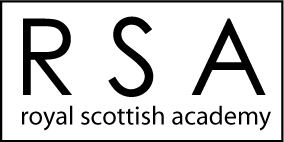We are delighted to be taking part in the 2024 RSA Residencies for Scotland programme. RSA Residencies for Scotland is an artist-led scheme which provides valuable research and residency opportunities for artists. It forges important networks with centres of artistic excellence across Scotland, ranging from traditional residency venues to specialised production facilities.
Open to visual artists at all stages of their careers, the emphasis is on enabling a period of research, development and production, as well as on the acquisition and exchange of new skills and experiences. Artists can apply for funds of up to £5,000 and are responsible for managing their own residency, in cooperation with the partner venue.
This opportunity is open to artists who were born in Scotland or who are currently living in Scotland (and have been for at least 3 years consecutively).
The aims of the RSA Residencies for Scotland programme are:
- To enable artists a dedicated period of research, development and production
- To reinforce links with centres of excellence across Scotland
- To provide access to technical expertise and assistance to learn new skills and techniques
- To enable the exchange of ideas and practice
For further details and to apply, please visit the RSA website.
Deadline for submissions: Sunday 14 January 2024, 17:00
Residency dates: to take place in 2024/2025
Launched in 2009, the RSA Residencies for Scotland programme is offered on a biennial basis. Previous recipients who have worked with Bothy Project are: Calum Wallis (2022), Becky Šik (2019); Bruce Shaw (2019); Hannah Imlach (2015); Uist Corrigan (2015); Sylvia Law (2014); Kari Stewart (2013) and Isla MacLeod (2013). And of course in 2011, Bobby Niven and Iain MacLeod successfully applied for a residency with Edinburgh Sculpture Workshop, during which they built Inshriach Bothy and initiated Bothy Project!
Should you have any questions about the opportunity, please email info@bothyproject.com
The RSA Residencies for Scotland programme is administered and funded by the Royal Scottish Academy and supported by The Wilhelmina Barns-Graham Trust and the W. Gordon Smith & Jay Gordonsmith Trust.



















